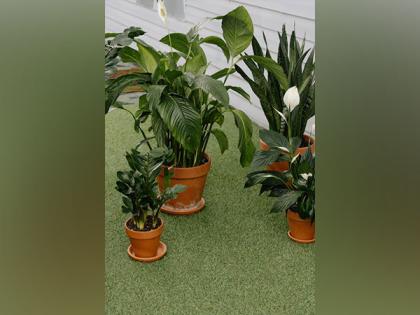Check out how plants perceive trauma
By ANI | Published: October 24, 2022 06:10 AM2022-10-24T06:10:45+5:302022-10-24T11:45:02+5:30
A new angle has been added to old hypotheses about how plants use calcium waves to react systemically to injury and other stresses.

Check out how plants perceive trauma
A new angle has been added to old hypotheses about how plants use calcium waves to react systemically to injury and other stresses.
Researchers at the John Innes Centre have demonstrated that calcium waves are a secondary reaction to an amino acid wave emitted from the wound rather than a main reaction.
These results cast doubt on conventional wisdom on long-range plant signalling molecules and the ways by which information is transmitted from the stress point across both living and non-living plant tissues.
It has long been known that injuries and other types of damage cause calcium waves to begin, which can move between cells quickly and farther between leaves.
The method by which these calcium waves occur has been debated because plants lack nerve cells, despite the fact that they are similar to the signalling seen in the nerves of mammals.
According to recent research published in Scientific Advances, cells that are injured produce a wave of the amino acid glutamate. This wave causes calcium channels to open up in the cell membranes of the tissues it passes through in plants. Although it is a passive response or "readout" of the flowing glutamate signal, this activation looks to be a calcium wave.
Previous explanations for how calcium waves travel across plant cells included active processes for calcium signal propagation. There was no explanation for how the response spread from one cell to the next; these explanations relied on the signal travelling via the cell membrane or by a pressure wave in the xylem.
Group Leader at the John Innes Center Dr. Christine Faulkner stated, "Every time active propagation models were presented, I would question how this wave travelled from cell to cell. It appeared to me that there was a hole in the theory, and this research uncovers a new mechanism that shows that the calcium wave isn't what it seems."
A wound signal might pass from cell to cell through plasmodesmata, the channels or bridges that connect cells, according to a theory put out by Dr. Faulkner's research team. However, they discovered that the mobile signal is a glutamate wave that goes outside of cells and along the cell walls utilising quantitative imaging techniques, data modelling, and genetics.
"The glutamate and calcium waves are connected -- glutamate triggers the calcium response. You could imagine it with an analogy of a corridor. The glutamate rushes down the corridor and as it passes a door it kicks it open. The calcium response is the door opening. Up to now the assumption has been that what moved down the corridor was hydraulic pressure or a series of propagating chemical reactions, but our study shows that this is not the case," said Dr Faulkner.
First author of the study Dr Analisa Bellandi said, "We've shown that calcium waves are synchronous with glutamate waves, and their dynamics match transmission by diffusion and flow. This research makes us rethink what we know. I am hoping that our research will inspire debate and allow people to take a fresh perspective on data which has been in the field for a long time."
Science Advances reports that calcium waves in plants are mediated by amino acid diffusion and bulk flow.
( With inputs from ANI )
Disclaimer: This post has been auto-published from an agency feed without any modifications to the text and has not been reviewed by an editor
Open in app